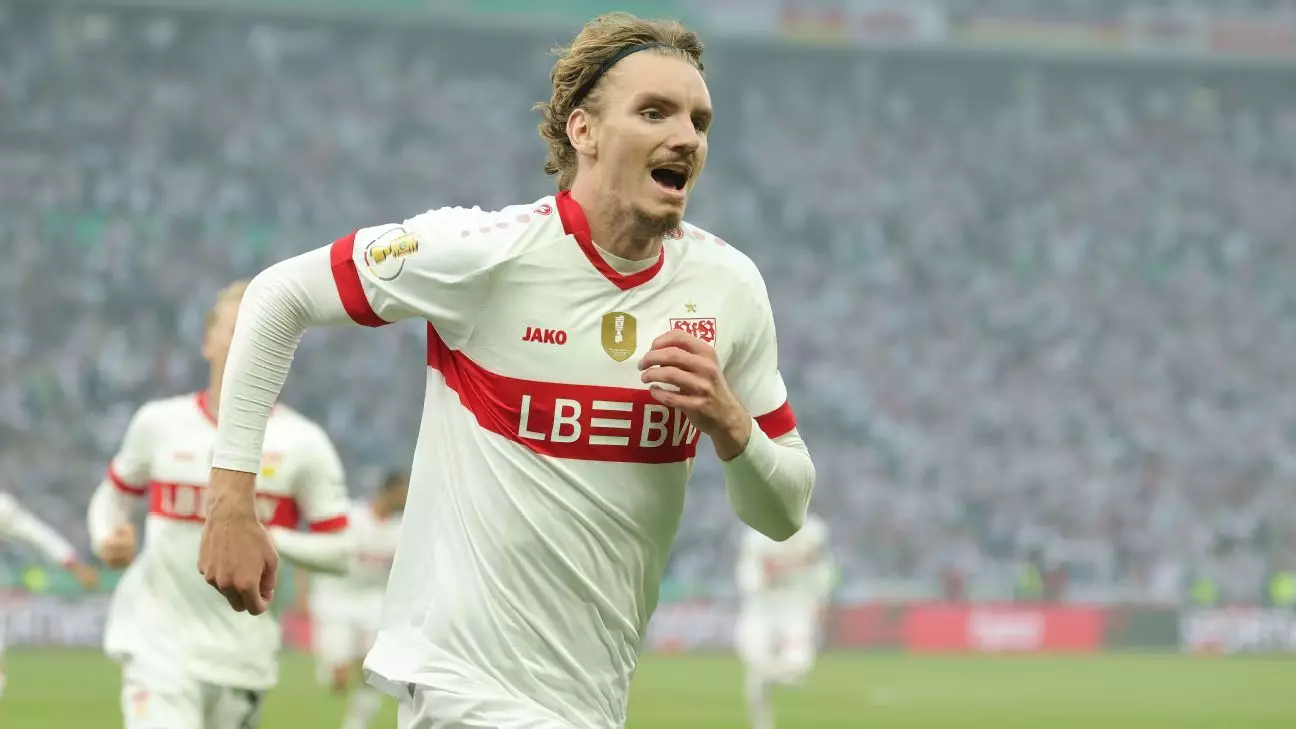In the ever-evolving landscape of professional football, the summer transfer window has once again become a theater of intense negotiations, strategic bidding wars, and calculated risks. Clubs are not merely shopping for players; they are meticulously crafting their future identities, ambitions, and competitive edges. Recent developments reveal a narrative where ambition meets caution, and potential giants clash over promising talents that could redefine the league standings.
At the heart of these upheavals is Newcastle United’s pursuit of Nick Woltemade, a striking embodiment of the new generation of forwards. Valued at around £40 million, Woltemade’s career trajectory has been nothing short of remarkable. After leading the UEFA Under-21 European Championship in scoring and showcasing a rare blend of height, technique, and unconventional agility, the 23-year-old has become a hot commodity. Newcastle’s interest, alongside Manchester United’s desire to secure him, highlights their strategic intent to bolster their attacking options in a fiercely competitive Premier League.
Yet, such pursuits are fraught with danger. Investing heavily in young, unproven talents carries the risk of misjudging their long-term potential. While Woltemade’s performance at youth levels suggests promise, the transition to top-tier senior football often exposes discrepancies between talent and consistency. Clubs like Newcastle and United must balance their desire for immediate impact against the unpredictability of player development. The decision to spend over £40 million on a player with limited top-flight experience sparks debate about the wisdom of betting on potential rather than proven excellence.
Meanwhile, Liverpool’s covert pursuit of Alexander Isak from Newcastle exemplifies strategic cooperation mixed with competitive tension. Indications of a verbal agreement signal their intention to secure a prolific striker to invigorate their attacking line, yet the unresolved nature of negotiations underscores a critical point: modern transfers have become chess matches that hinge on subtle negotiations, economic valuations, and player preferences. Isak’s desire to move to Anfield, coupled with Liverpool’s potential willingness to pay a fee over £100 million, suggests a club willing to make a substantial financial statement—an act that could reshape their squad’s financial landscape.
However, such high expenditure raises questions about sustainability. In an era where clubs face financial fair play constraints and fluctuating revenues, investing heavily in a player nearing the prime of his career might create long-term vulnerabilities. The strategic gamble becomes whether Liverpool can translate this investment into domestic dominance or merely a fleeting boost.
On a different front, the persistent saga surrounding Vinícius Júnior’s contract negotiations with Real Madrid exemplifies the delicate balance of loyalty, expectation, and financial prudence. The apparent extension delay, stretching into 2026, reveals both the club’s desire to retain their star and the player’s satisfaction with current terms. Such negotiations highlight the importance of player-club relationships in an age where transfers are often driven by the highest bidder. Real Madrid, a club renowned for their strategic patience, serves as an intriguing case study in how long-term planning can outperform rapid-fire acquisition strategies.
Furthermore, the broader transfer landscape is emblematic of a seismic shift in how clubs operate. The pursuit of players like Ferran Torres by Saudi Pro League giants, the flurry of activity involving young talents like Kashawn Gilles and Kendry Paez, and the intense bidding for wide-ranging targets such as Samu Aghehowa or Lucas Beltran reflect an increasingly globalized and fragmented transfer market. This chaos, while exciting, underscores the peril of overextension—clubs may chase multiple targets, risking unsustainable financial commitments and internal destabilization.
The obsession with unearthing the next big star transformed football into a high-stakes fantasy league, where scouts and executives operate under immense pressure to identify undervalued gems or unproven talents. Woltemade’s profile—height, technical skill, scoring prowess—serves as an archetype: a gamble that could either redefine an attack or become a costly misfire.
While some clubs prudently hedge their bets, others push aggressively into uncharted financial territory, risking future stability for immediate glory. The enduring questions remain whether these strategic plays will pay off in trophies and titles or plunge clubs into precarious financial circumstances. Ultimately, the modern transfer market is less about purely sporting goals and increasingly about strategic positioning—a game of chess played with millions of euros, where the stakes are measured not just in trophies but in long-term club viability.
These high-profile negotiations and player pursuits exemplify an industry that is both deeply strategic and inherently risky. Clubs are navigating a complex web of economic, sporting, and reputational factors, attempting to strike a balance between short-term success and long-term stability. Whether this approach will translate into sustained excellence or lead to financial crises remains to be seen. One thing is clear: the modern football transfer market is no longer merely a sport but a major global enterprise defined by ambition, calculation, and sometimes, reckless gambles.

